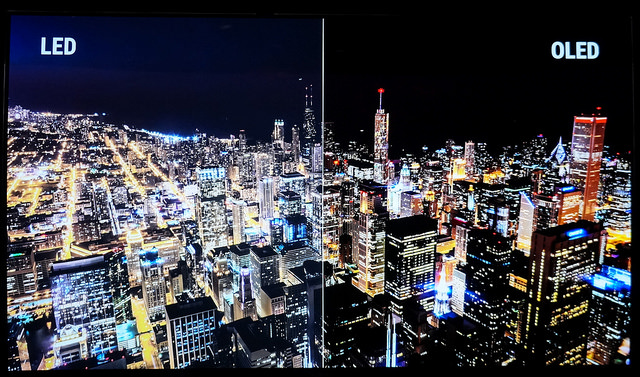By
Rob ScottJanuary 9, 2015
During the LG press conference at CES earlier this week, Netflix announced that it plans to introduce high dynamic range (HDR) to its 4K UHD streaming sometime this year. While a specific timeline was not revealed, it is expected that the HDR streaming will coincide with the launch of LG’s much talked about OLED TVs. Netflix support for HDR was also announced with Sony; the company’s X900C ultra-thin UHD TV showcased at CES will run on the new Android TV platform and provide access to Netflix 4K. Continue reading Netflix to Introduce High Dynamic Range to its 4K Streaming
By
ETCentricJanuary 9, 2015
In addition to a flood of UHD TVs on the CES show floor this week, and some noteworthy announcements regarding streaming content, physical media fans also have some interesting news. “The Blu-ray Disc Association has confirmed the name of its 4K format (Ultra HD Blu-ray) and many of its capabilities,” reports Engadget, “while the Secure Content Storage Association has its own demo for Ultra HD movies you can download and transfer (almost) at will, with backing from Fox, Warner Bros., Samsung and others.” Panasonic demonstrated its prototype Ultra HD Blu-ray player (we could see discs by the end of this year). And like the BDA, SCSA says its finalized spec is “coming soon.” When it’s ready, the spec will be used by Samsung and M-Go to launch a 4K movie download service.
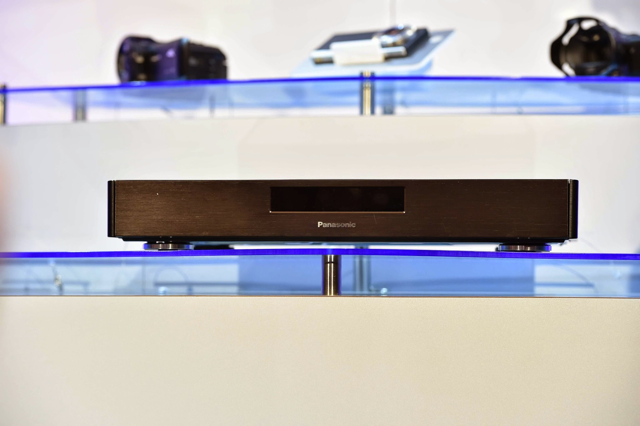
By
ETCentricJanuary 9, 2015
Energous claims to have a solution to the often imperfect practice of wirelessly charging our mobile devices. The company’s WattUp technology — winner of this year’s Best Innovation from Engadget’s Best of CES — can charge up to 12 gadgets at once within a radius of 15 feet (the closer your device is to the $300 transmitter, the faster the charge). According to The Verge, “Energous’ vision is that your phone, wearables, and other devices will slowly charge throughout the day, preventing you from ever having to actually plug it in or worry about power level.” The tech may one day appear in smartphones and wireless speakers, but in the short term you’ll need to place your phone in a WattUp battery pack.
By
ETCentricJanuary 9, 2015
U.S. consumers may be ready for the connected cars prevalent at CES this week. According to a Harris Poll for AutoTrader.com, a majority of drivers would pay up to $1,499 to have new entertainment and safety features in their vehicles. “Back-up cameras, USB ports and smartphone charging are among the top desires,” reports Bloomberg. “About 55 percent said music streaming services such as those of Pandora Media and Spotify make driving more enjoyable.” At CES, vendors demonstrated self-driving cars, curved touch screens, connection with phones and smartwatches, and more. Accenture says in-vehicle tech is now the top selling point for 39 percent of buyers, while a mere 14 percent are most concerned about horsepower and handling.
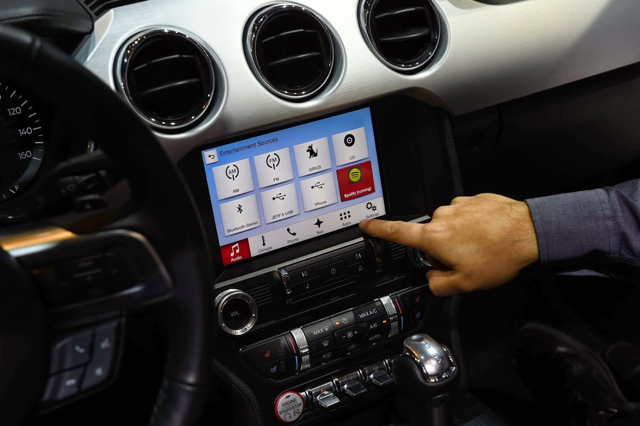
By
Don LevyJanuary 9, 2015
CEA gathered a panel of four significant leaders at CES to discuss the current state of the Internet of Things. Panelists from Cisco, Verizon, the city of Los Angeles, and the Zigbee Alliance all see momentum building for a connected world; however, at this still early stage of adoption the most significant and meaningful inroads are happening on a macro scale. As Cisco’s John Chambers noted during a CES keynote panel, the Internet of Everything becomes most meaningful when there is broad participation. Continue reading CES Panel: Is the Internet of Things Poised to Make History?
By
George GerbaJanuary 9, 2015
Aftershokz showed its newest version of direct bone conducting Bluetooth headphones at the 2015 International CES this week. When maintaining situational awareness is necessary, these devices allow natural sounds to travel unimpeded through your ear drums and use the alternative path of passing tiny vibrations through your cheek bones physically to your inner ear. One touch access to calling on any attached smartphone is possible along with equalization presets to maximize them to your preferences. Continue reading Aftershokz Headphones: Stay Connected Through Your Bones
By
Phil LelyveldJanuary 9, 2015
The ONvocal Mix360 Bluetooth headset and phone app allow you to easily balance the volume of your music player, phone, speaking voice, and the ambient noise around you. This is an elegant solution for people who spend a lot of time on the phone while on the go. According to the company, the tech allows Mix360’s “playback to rival the sound quality of a wired connection, and high-performance speakers deliver deep bass, clear vocals, and sparkling highs.” The Mix360, which worked well during its CES demo, sells for $299. Continue reading ONvocal Introduces its Mix360 3-Way Control Headset at CES
By
ETCentricJanuary 9, 2015
A joint research study by NATPE/Content First and CEA indicates that millennials now place more value on Netflix than broadcast and cable TV subscriptions. The findings were presented yesterday at CES. “The biggest takeaway was just how important streaming has become to how millennials, the generation defined as people ages 13 to 34, consume TV content,” notes The Hollywood Reporter. “According to the study, 51 percent of millennials consider Netflix subscriptions very valuable, compared to 42 percent for broadcast channels and 36 percent for cable subscriptions. Young people are also more likely to stream a full-length TV program than watch it live on TV during its original air time or time-delayed on a DVR.”
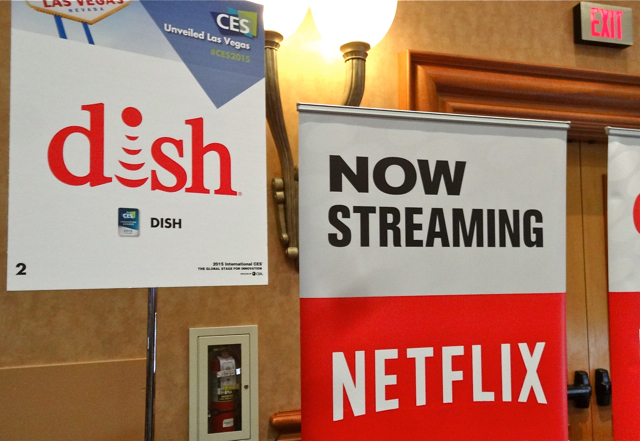
By
ETCentricJanuary 9, 2015
Speaking at the Variety Entertainment Summit during CES, CBS Interactive President & CEO Jim Lanzone announced that the network’s All Access Internet TV service is a hit with super-fans, and subscribers who pay $5.99 per month are watching twice as much content as regular broadcast viewers. While he did not reveal the number of subscribers, “Lanzone noted that about 10 million U.S. households have broadband but do not pay for cable or satellite TV,” reports Variety. “Lanzone said CBS All Access has been a ‘Rorschach test’ of where industry executives believe television is going. But he maintained that all along, the broadcaster’s goal with the over-the-top service was simply to cater to an audience that wanted to access more of the Eye’s programming, on more devices.”
By
ETCentricJanuary 9, 2015
Dieter Zetsche, CEO of Mercedes parent company Daimler AG, unveiled the F 015 concept luxury vehicle earlier this week at CES. “The front seats can swivel to the rear as the steering wheel recedes into the instrument panel and the car takes control,” Bloomberg explains. “Sculpted open-pore walnut wood veneers and ice-white leather add to the chill-out ambiance of the interior, while six screens allow passengers to interact with the machine via touch, hand gestures and eye-tracking.” The so-called Luxury in Motion prototype, which Zetsche describes as “a mobile living space,” is part of an effort by upscale manufacturers to compete with Google’s push into self-piloted vehicles. At CES, Audi showcased an autonomous A7, which arrived in Las Vegas after a 560-mile journey.
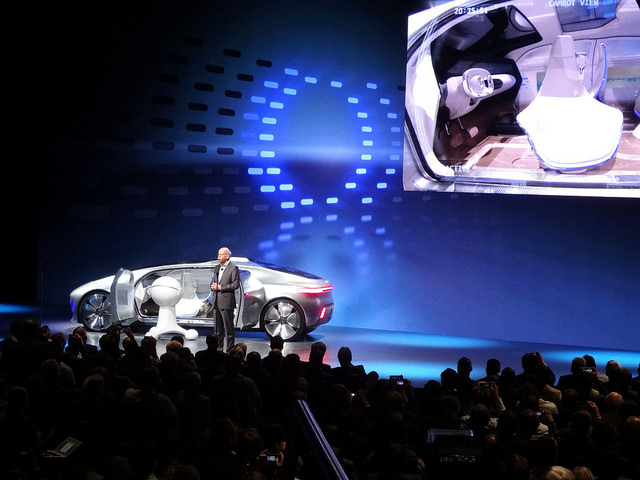
By
Debra KaufmanJanuary 8, 2015
HDR (High Dynamic Range) — which enables a greater range of luminosity that results in enhanced color and contrast — was a feature demonstrated on numerous TV displays at the 2015 CES in Las Vegas. A panel looking at “HDR: Hollywood’s New Creative Tool” brought together studio execs, technologists and display manufacturers to talk about HDR’s advantages and the obstacles in achieving wide adoption. Panelists discussed the new Ultra HD Alliance, the need for standards, and much more. Continue reading CES Panel Discusses HDR as Hollywood’s New Creative Tool
By
Debra KaufmanJanuary 8, 2015
The Consumer Electronics Association’s Director of Business Intelligence Jack Cutts is the organization’s lead analyst on smart eyewear, watches, glasses and phones. He released his forecast figures for the category of wearables — here defined as fitness trackers, smartwatches and smart eyewear (plus any device worn in, on or around the eyes). When will wearables go mainstream? This is one of the issues that Cutts’ data revealed, starting with the current market and out to 2018 and beyond. Continue reading CEA Exec on the History and Direction of Wearables (Part 1)
By
Debra KaufmanJanuary 8, 2015
In History and Direction of Wearables Part 1, we looked at the Consumer Electronics Association’s numbers for wearables, from 2014 through the end of 2015. CEA’s Director of Business Intelligence Jack Cutts released his forecast figures for the wearables category, specifically in terms of fitness trackers, smartwatches and smart eyewear. In Part 2 of our report, we look at CEA’s projected numbers regarding wearables from 2016 through 2018 and beyond. “This time next year will be the beginning of the wearables mania,” said Cutts. Continue reading CEA Exec on the History and Direction of Wearables (Part 2)
By
Phil LelyveldJanuary 8, 2015
Japanese startup FOVE has developed a virtual reality head-mounted display with built-in eye tracking. The eye tracking enables the software to render the areas where the viewer is not looking with less precision than the area where the viewer is staring, allowing for more efficient CPU/GPU resource utilization. The rendered image was very clear, and the eye tracking worked well. When the headset goes to market, a FOVE rep expects the HMD with headtracking to sell for $400-$450. Continue reading Startup Demos New Eye Tracking Virtual Reality HMD at CES
By
ETCentricJanuary 8, 2015
It was a big year for television at the 2015 CES, with buzzwords such as 4K, HDR, OLED, contrast, color space and curved screens filling the air in Las Vegas. Another hot topic was quantum dots — tiny crystals designed to enhance color and efficiency. Manufacturers including Samsung, LG and TCL are following Sony’s lead in introducing the technology.“Quantum dots promise to solve a very fundamental problem with modern LCD TVs, which is that the range of colors on LED-backlit sets are simply not as good as the ones on plasma and OLED TVs,” reports The Verge. “The allure of quantum dots is that they can be added as a layer on top of an LCD TV’s LED backlight to fine tune the light that makes it through. That can dramatically improve the color gamut, and do it at about a third of the cost of producing OLED displays.”
